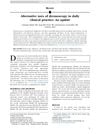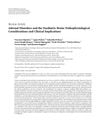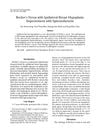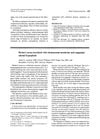Becker's Nevus Syndrome
August 2018
in “
Journal of pediatric neurology
”
TLDR Becker's Nevus Syndrome is a rare condition with a skin patch and possible bone and muscle abnormalities, treated mainly for appearance.
Becker's nevus syndrome (BNS) was characterized by a patch of light or dark brown hyperpigmentation with hypertrichosis, often accompanied by ipsilateral soft tissue hypoplasia and skeletal anomalies such as vertebral hypoplasia, scoliosis, and pectus carinatum or excavatum. First described by Becker in 1949, BNS was also known as pigmentary hairy epidermal nevus syndrome. Fewer than 100 cases had been reported, with a slightly higher incidence in females. The condition was believed to result from paradominant postzygotic mutations and/or androgen-dependent hyperactivation. The extracutaneous lesions were congenital and nonprogressive, with the natural history of Becker's nevus being similar to isolated nevi. In prepubertal boys, pigmentation was less intense, and hairiness was mild or absent, similar to women, but increased in men after puberty. Treatment was primarily cosmetic, including options like electrolysis, waxing, makeup, or laser.



